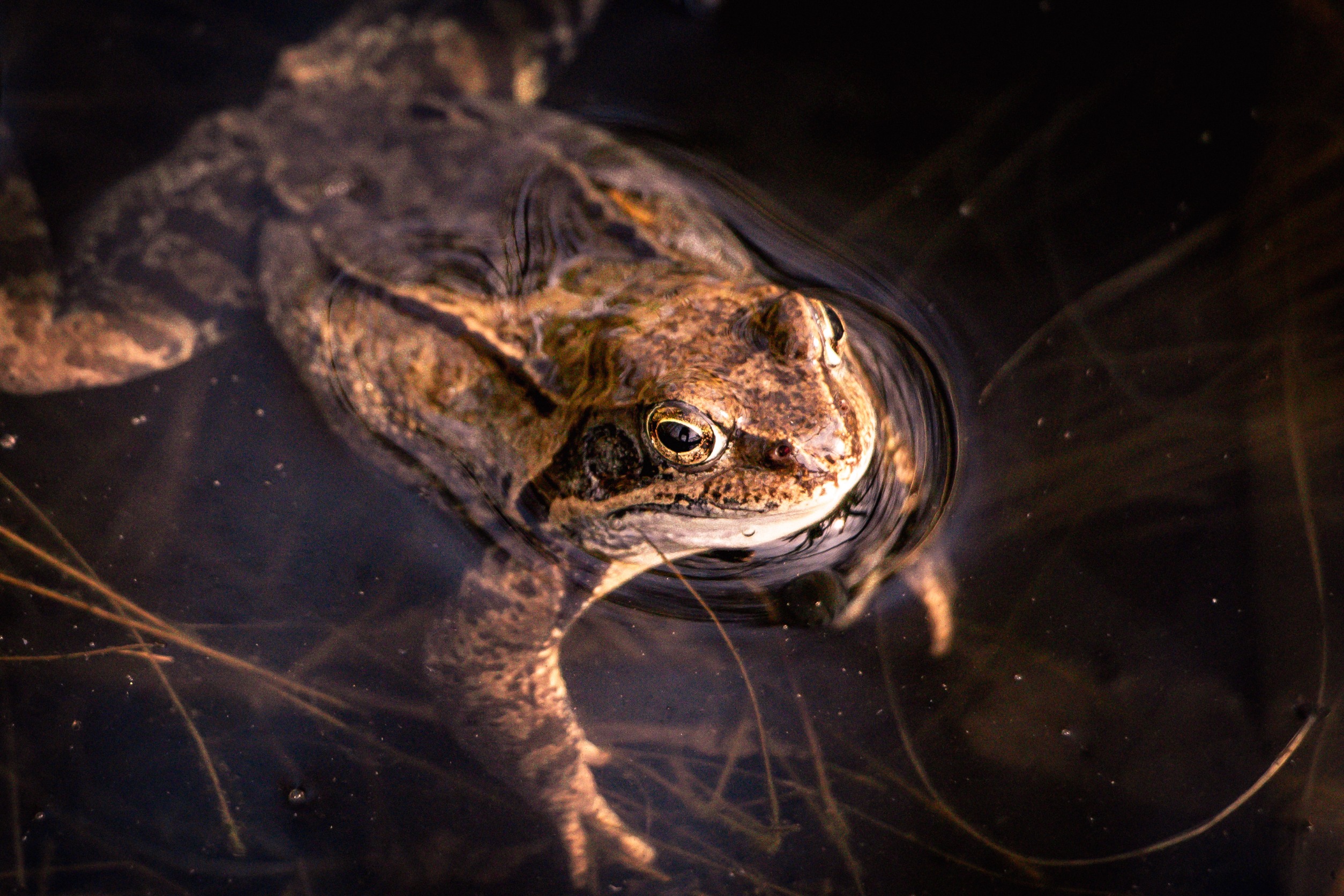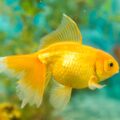Certain species of catfish will indeed consume frogs, provided the frogs are of a size that the catfish can manage. As opportunistic feeders, catfish have a diverse diet and tend to consume whatever edible organisms are within their reach, and this can include small to medium-sized frogs. Therefore, whether a catfish eats a frog is mainly dependent on the frog’s size and the catfish’s immediate environment.

Do catfish eat tadpoles?
This is a question many pond owners and fish enthusiasts often ask. With their diverse and opportunistic dietary habits, the short answer is yes, catfish can and do eat tadpoles. This behavior is influenced by factors such as the size of the catfish and the tadpoles.
Tadpoles, being smaller than adult frogs, often become part of the catfish’s menu. Larger catfish have the capacity to consume multiple tadpoles in one sitting, while smaller catfish might only manage one or two.
The type of catfish also plays a significant role in whether tadpoles become part of their diet. Certain predatory catfish species, such as red-tailed and flathead catfish, tend to consume tadpoles more than herbivorous species like the pleco.
So, when considering adding catfish to your frog-populated pond, it’s crucial to consider the catfish’s dietary habits. Understanding that catfish eat tadpoles can help you determine your pond’s biodiversity. Remember, the survival of tadpoles in a catfish-populated environment dramatically depends on the size and species of the catfish.
What does a catfish eat?
Catfish are bottom feeders, meaning they scavenge for food on or near the river or lakebed at the bottom. They are one of the fish with the most varied diets. This is because catfish are opportunistic feeders, so they eat whatever is nearby without being picky. However, the diet does vary depending on their habitat, availability of food, and personal feeding preferences.
In the wild, catfish eat a wide range of foods, including insects, crustaceans, mollusks, small fish, and even some plant materials like phytoplankton. Some species of catfish are even seen to feed on small mammals and birds that fall into the water. They can eat pretty large-sized animals, even birds, because they grow to a large size.
When it comes to fishing, you can attract a catfish the most by using different types of bait, such as worms, chicken liver, and some kinds of meat. Catfish bodies are flexible and move around a lot, so you want a solid hook to get them stuck. Since these are easy baits to get, catfish are a popular fish for anglers to catch.
In captivity, catfish can be fed various commercial fish foods like pellets, explicitly designed to meet all their dietary needs. These pellets typically contain a mix of proteins, vitamins, and minerals to ensure that the catfish gets a balanced diet containing all the nutrients needed to stay healthy and live a long life.
What does a baby catfish eat?
Baby catfish, or fry, have different feeding habits and requirements than adult catfish.
In the wild, catfish fry feeds on small aquatic insects, plankton, and other tiny organisms. These constitute their earliest diet. As they grow, more foods are added to this diet, depending on their size and preferences. They scavenge for these foods by themselves.
However, if you have pet catfish fry in captivity, you must provide a balanced and nutritious diet to ensure their proper growth and health. Catfish fry can die young if not provided with adequate food, and they won’t be able to eat the same foods you throw in for the adult catfish.
The easiest solution to feeding baby catfish in captivity is to offer them commercial fry food. This type of food is made so that the nutritional needs of young fish are adequately met. You can find them in any store selling pet fish. These foods usually come in a powdered form or as tiny pellets that are easy for the fry to eat.
But if you want to give them a more organic diet, you must design it well. The best food to feed them is freshly hatched brine shrimp or other small live foods, such as daphnia or microworms. However, when it comes to baby catfish, how you feed them is as essential as what you feed them.
With adult catfish, you give them a decent amount of food about twice or three times a day, but the same can’t be done for babies. For them, you have to give them tiny amounts several times a day. If you give them too much, they will try to gobble it all up, which won’t be good for their small stomachs, but they also need a lot of food, so you must feed them multiple times daily. This will help you avoid overfeeding while also ensuring their growth.
Do catfish eat other fish?
Since catfish are opportunistic predators, it’s not uncommon or unheard of for them to eat other fish if the opportunity arises. Catfish have an extremely varied diet and will consume whatever prey is available to them if they’re hungry. The exact diet varies according to the species and size of the catfish, but generally, they may eat smaller fish and small mammals.
Some species of catfish, such as the channel catfish and flathead catfish, are sometimes called “predatory catfish.” They are known to actively hunt and consume other fish, which constitutes a relatively significant part of their diet. Since these species grow much, they can swallow prey whole. Catfish can consume fish up to half their size or even more prominent.
Do catfish eat other catfish?
As scary as it may sound, catfish are one of the fish that eat their kind. So they are opportunistic feeders in the complete sense of being so. Cannibalism in catfish can occur for various reasons—for example, competition for food, aggression, and territorial disputes. If you’re raising only catfish in your tank and not giving them food, it’s only a matter of time before the stronger one starts eating, the weaker one.
Some species of catfish show a higher tendency towards cannibalism than others. For example, the channel catfish exhibit cannibalistic behavior, especially in hatcheries or overcrowded ponds. Similarly, the flathead catfish also eats its kind, with larger individuals preying on smaller individuals of the same species. Interspecies cannibalism is much more common.
Cannibalism doesn’t help the catfish in any way other than assisting them to survive a little longer. It is an essential factor associated with lower survival rates of catfish in hatcheries. Cannibalism also increases fish’s stress levels, making them more susceptible to disease and other health issues.
To prevent cannibalism among the catfish you’re raising, you must give adequate space and hiding places in the tank or pond. Feeding the catfish a balanced diet that meets their nutritional needs is a must to reduce the likelihood of cannibalism. It’s also vital to monitor catfish populations and separate individuals that show aggressive or cannibalistic behavior. Otherwise, any other fish in the same water as them, including fellow cats, will be in danger.
Do catfish eat goldfish?
It’s not unheard of for catfish to eat goldfish if they are kept in the same tank. Catfish will eat almost anything they can fit in their mouths, which is goldfish, a relatively small fish in size and hence easy to eat. The likelihood of a catfish eating a goldfish depends on the size of the catfish and the goldfish.
The catfish that are more likely to eat goldfish include the channel, flathead, and red-tailed catfish. These species can grow quite large and have mouths big enough to swallow small to medium-sized goldfish, and they are also more predatory and have a rather aggressive temperament.
If you plan to keep catfish and goldfish in the same tank, it’s crucial to choose a catfish species that is compatible with the size and temperament of your goldfish. In general, it’s best to avoid keeping large catfish species with small or medium-sized goldfish, as the catfish may see them as potential prey.
Instead, you can keep small to medium-sized catfish species, such as bristle nose catfish or cory catfish, which are often better choices for community tanks with goldfish. These species are less likely to view goldfish as food because they’re herbivorous. They can help keep the tank clean by eating algae and other debris. It’s also essential to ensure the tank is large enough to accommodate both species and provide good hiding places and swimming space.
Can you feed rice to your catfish?
You can feed rice to your catfish if you want, it doesn’t harm their health in any way, and they won’t reject it either. Keep in mind that it should not be the leading food in their diet like it is in yours. Rice lacks several essential nutrients that catfish require to maintain their health and growth. Therefore, it should be considered merely a tiny part of the diet, something like a treat.
There are some things to remember when feeding rice to your catfish. The rice should be boiled or steamed and broken down into smaller pieces to ensure easy digestion. Rice can be given in small amounts a few times a week. It must be part of a balanced diet that includes a variety of foods such as commercial catfish pellets, live or frozen foods, and fresh vegetables.
And if you want to find the healthiest option for rice, brown rice is better than white rice. Brown rice contains more fiber, vitamins, and minerals, making it more nutritious. Just ensure to cook it properly before.
Tips on creating a perfect diet for your pet catfish
Since catfish can eat various foods, their nutritional needs are higher than most fish. You will have to plan your diet the same way you would. Here are some tips to help you with that:
Maintain variety in the meals
To create a balanced diet for catfish, include a variety of foods to ensure that they receive all the nutrients they need. Instead of giving them the same foods every day, swap between live or frozen foods such as bloodworms, brine shrimp, daphnia, commercial catfish pellets, and flakes.
Take the catfish’s size and age into consideration
Depending on the species and size of your catfish, you may need to adjust the size and the amount of food you feed them. Small catfish and young catfish will require tinier food particles, while giant catfish can handle larger pellets or pieces of food of greater variety.
Mix up protein and vegetables in a balanced way.
Like your diet, catfish also need a balance of protein and vegetables. You can provide protein in the form of live or frozen foods, while vegetables can be algae wafers or fresh produce like cucumber, zucchini, or spinach.
Pay attention to the dietary needs of your catfish
Depending on the species of catfish you have, its age, size, and overall health condition, its nutritional requirements may vary. Some species of catfish need a higher protein content in their diet, while others who lean more towards an herbivorous diet may need more vegetables or specific nutrients.
Do not overfeed
Overfeeding can lead to many health problems in catfish, such as obesity and poor water quality. Long-term overfeeding can even lead to the death of your fish because their body won’t be able to take it. Feed your catfish only the amount of food they can consume in a few minutes, and remove any uneaten food from the tank right after they take a rest. If you leave the uneaten food be, they will keep eating it all at once.
In conclusion, catfish have an incredibly diverse diet. It is interesting to observe their feeding behavior both in the wild and in captivity.











